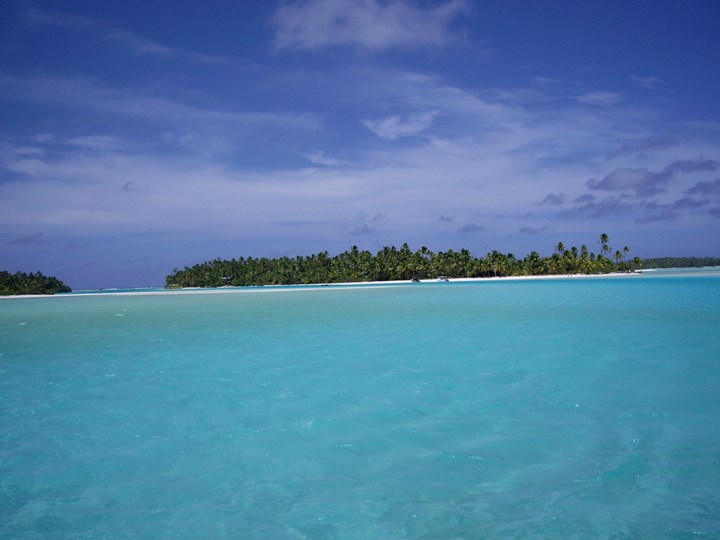Both hands are clasped around his chubby belly and between his wide-spread legs is an impressive body part that would delight any demi-God. Although early artisans once removed this appendage, today his entire image stands visibly intact and is even minted on a special coin.
Tangaroa, the Maori guardian of the ocean, is a well-known deity of the Cook Islands and is one of the first carved artifacts we encounter during our recent Rarotonga experience.
The Cook Islands sprinkle over two million kilometres of the South Pacific, and though just west of Tahiti and south of Hawaii, they are idyllically removed from any commercialized bustle. Rarotonga is the queen bee of them all, and during our visit we discover how her roots entwine with present day treasures.
The award-winning cultural village sprawls over the lush inland property just seven kilometres from the island's vibrant hub of Avarua, and beneath Polynesian-style amphitheatres, knowledgeable natives reveal historical tidbits.
Lara, a brown-eyed beauty, wearing a fullfaced smile and fragapani behind one ear, begins our journey back in time: "Nobody's really sure where our ancestors originated from, but we do know that this little fellow was the fisherman's God for good luck."
We discover the first recorded sight of a Cook Island was by Alvaro de Mendana, a Spanish chap, way back in 1595. Exploration in the area remained dormant until 1773, when the famed Captain James Cook came along, and although this well-known explorer never set foot on Rarotonga, the entire chain adopted his name.
"Raro" was actually discovered by Fletcher Christian, a first mate mutineer, soon after Captain Bligh and his boys
were sent adrift following the infamous mutiny.
Lara wraps up the condensed Cook history lesson by sharing the spiritual movement that took place in the 1820s. "Polynesian missionaries successfully transformed the population of angry cannibals to Christians," she informs, "and all in less than a year's time." Now that's conversion!
Sunday remains a day of rest, and church continues to be a cornerstone in Cook Island culture today. Although there are
varied denominations, 70 per cent of the population attends Presbyterian services. And as we had discovered the day before, a visit to one of these Sabbath sanctuaries is well worth it.
Initially the set-up appeared pretty much apropos. From a pedestal platform the reverend delivered the sermon and although I couldn't decipher a word of the Maori message, I perked right up when he instructed, "We'll now sing a traditional hymn."
There wasn't a song book in sight, but it was obvious the regulars knew every word by heart. One male voice took the lead, then a few more joined in, and before long the congregation was bringing down the roof in a-capella harmony.
Soulful togetherness oozes beyond the hallowed halls of the whitewashed limestone chapels. Rarotonga time is like being in slow-mo. There's no rush hour, fast food chains or big box stores. Billowy palms line sandy shores and canopy the 32 kilometres of grey asphalt that rings this South Pacific gem. A secondary road bisects the lush tropical interior and is flanked by humble cyclone-proof cinderblock homes and flourishing crops.
"Taro, arrowroot and coconut are our primary staples," we're informed by James, a gregarious guide, who mans the final station of our cultural tour.
Like followers of the Pied Piper, we've traipsed the trails to a number of thatched roof outposts, and united with
Kiwis, Aussies and other Canadians, to learn how to create everything from grass skirts (papas) made from Mulberry bark, to primitive bowls using spiky pandana leaves.
Now, as well as furnishings and fashions, we discover there's enough goodness in the harvested hills to sustain year-round living. With one swift machete swing, James slices a hairy fruit husk in half and samples the sweet coconut nectar.
The tasty treat later finds its way to our crafty bowls where it complements marinated chicken, breadfruit and other home-grown favourites. And while dining on the finger-licking grub, we're entertained by "hypnotic" dancers who gyrate erotically to the beat of slit drums.
It's a grand finale to the three-hour tour, a scrumptious pairing with cultural enrichment, and a feast fit for any God or Goddess, even if they aren't related to Tangaroa the great.
Travel Writers' Tales is an independent travel article syndicate.



